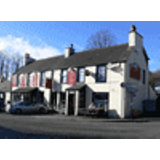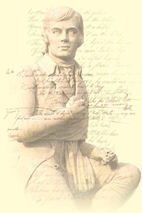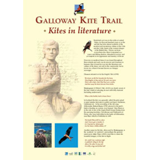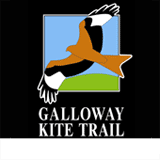2. Red Kites in Literature (Clachan Inn)
 Click for more images Click for more images |
| ||||||||
| Red Kites in Literature Restricted as it was to the wilds of central Wales, for the past hundred years or so the red kite has been almost symbolic of the mystical and mysterious culture of the Celts and the Celtic lands of the western fringes of the British Isles. Driven out from everywhere else, there it remained as a scarce and flitting shadow, shrouded in secrecy and yet majestic in its appearance and mastery of the air. However, in medieval times it was found throughout these islands and such was its renown and closeness to humans, that it found its way into the literature and culture of the times, not only in the countryside, but in towns too, where it became known as a hungry scavenger. Chaucer referred to it in his Knight's Tale (c1390):  `We stryve as did the houndes for the boon, They foughte al day, and yet hir part was noon; There cam a kyte, whyl that they were wrothe, And bar away the boon betwixe them bothe.' Shakespeare (AWinter's Tale, c1610) was clearly aware of the kite's habit of adorning its nest with frilly material (including underwear!): `When a kite builds, look to lesser linen.' In Scotland the kite was generally called the gled, glead or glad (similar derivation to glide) and hence Gladstone, Gladsmuir etc. In his reworking of the old song, Killiecrankie, Robert Burns (1790) referred to the gled's habit of feeding on carrion, even human! Here Burns is in the role of one of the Anglo-Dutch troops fleeing from the pursuing Jacobites, Claverhouse and Haliburton of Pitcur, who were both killed in the battle of Killicrankie, near Blair Atholl in Perthshire in 1689. `The bauld Pitcur fell in a furr, And Clavers gat a clankie, O, Or I had fed an Athole gled, On the braes o Killiecrankie, O!' Another name for the kite, often used by Shakespeare, is the `paddock' (or `puttock'), and perhaps the greatest nature poet, John Clare (c1820), used this to create the beautiful imagery of the kite in flight. `Ah, could I see a spinney nigh, A paddock riding in the sky, Above the oaks, in easy sail, On stilly wings and forked tail.' | |||||||||
 |
|
|








